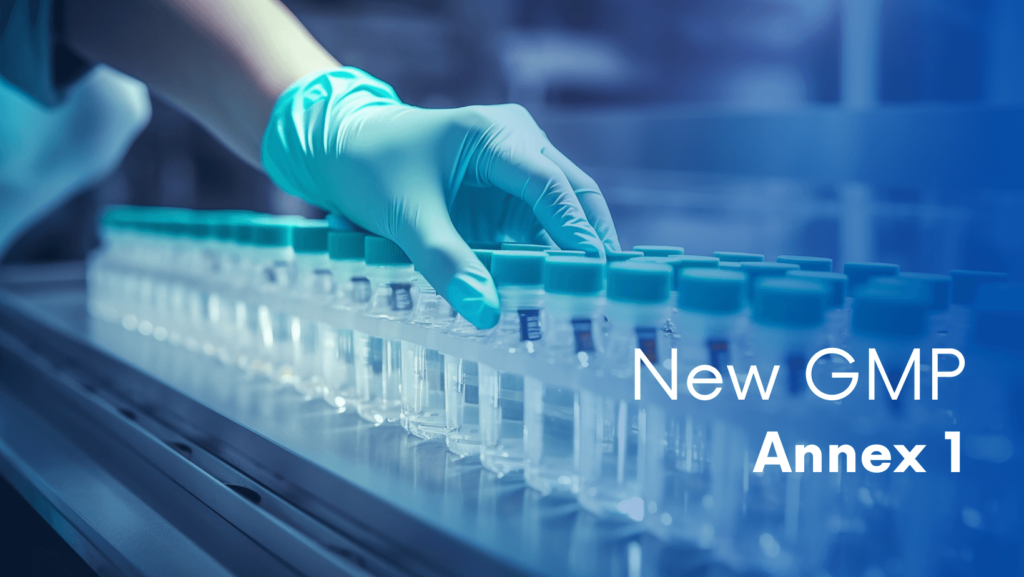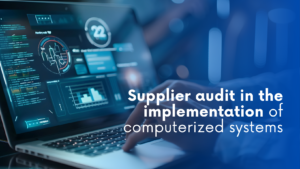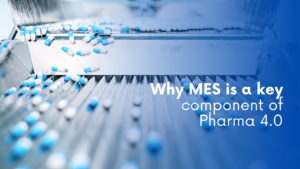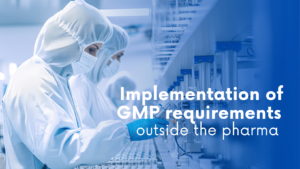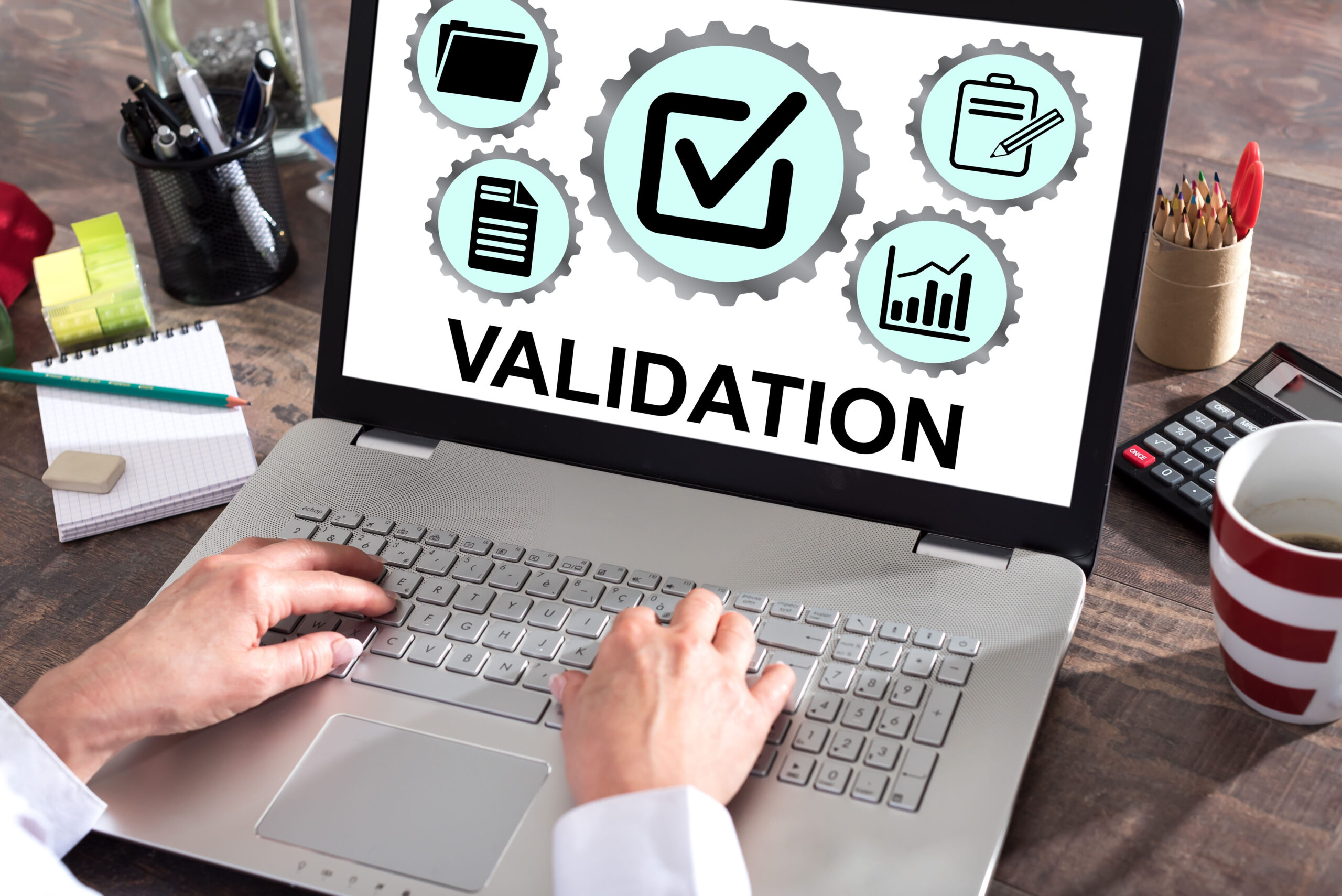Annex 1, “Manufacture of sterile medicinal products,” is part of EudraLex Volume 4, which provides guidance on the minimum control measures required to protect sterile medicinal products during manufacture. All manufacturers supplying medicinal products to the European market must comply with these requirements to minimize the risk of microbiological, particulate and pyrogenic contamination of the final product.
After a lengthy revision of the previous 2008 version, the long-awaited revised Annex 1 was finally published by the European Commission on August 25, 2022. This significant update was the result of collaboration between European health authorities, the World Health Organization (WHO) and the Pharmaceutical Inspection Convention/Pharmaceutical Cooperation Scheme. The first draft went through a targeted consultation involving 140 companies and organizations from December 20, 2017 to March 20, 2018. This round of consultations resulted in more than 6200 comments. The updated draft was submitted for a second targeted consultation with a limited number of stakeholders from February 20, 2020 to July 20, 2020.
The goal of the revision was to address current regulatory and technological developments in the manufacture of sterile drug products and to increase transparency, dictated by the following factors:
- Integrate ICH Q9 (Quality Risk Management) and Q10 (Pharmaceutical Quality System) guidelines and incorporate new technologies and innovative processes,
- Pursue compliance with standards (e.g., WHO, PIC/S) and harmonization with FDA guidelines for sterile drug products manufactured in an aseptic process
- Introduction of specific requirements for single-use systems (SUS),
- Warning letters and declarations of non-compliance with good manufacturing practices (GMPs) related to sterile manufacturing
- recalls that have occurred due to sterility failure or contamination.
A full revision of the current Annex 1 was highly desirable, as the pharmaceutical industry has evolved at a very rapid pace over the past decade, especially with the development and emergence of new technologies and many new products, such as personalized medicines, in the pharmaceutical market. In addition, regulators have observed poor investigative practices, lack of true root cause analysis and inadequate identification of effective CAPAs during inspections. Revising Annex 1 was key to strengthening existing EU requirements and keeping pace with advanced technologies, such as the use of barrier technology. The new version needed to reflect new insights and expectations in cleanroom design, equipment and utilities, as well as the implementation of new rapid microbiological methods.
The new Annex 1 will enter into force on August 25, 2023, and will affect sterile drugs manufactured in the European Union, as well as imported products.
Only for Chapter 8.123 “Lyophilizers and related product transfer and loading/unloading areas (…)” the deadline is two years, until August 25, 2024. The new guidelines for the transfer of products to and from lyophilizers have a two-year implementation period, presumably due to the scale of the required changes (physical, operational and procedural).
In the most general terms, the updated Annex 1 provides comprehensive guidance on premises, equipment, utilities, personnel, production and technology, environmental monitoring and aseptic process simulation. Each chapter emphasizes the importance of implementing QRM principles.
The updated version of Annex 1 includes several new requirements and recommendations that may pose challenges for many sterile drug manufacturers.
What are the main concepts presented in the draft revision of Annex 1?
The updated version of Annex 1 emphasizes the application of QRM principles throughout the sterile manufacturing process. The goal is to proactively and continuously identify, assess, resolve, control and monitor potential risks associated with microbiological, particulate and pyrogenic contaminants. This comprehensive approach includes the design, qualification and operation of facilities, media, equipment and process validation using well-designed procedures, as well as the use of monitoring systems to demonstrate continuous performance as expected.
The centerpiece of the new Annex 1 is proactive quality risk management (QRM). The concept of QRM in the pharmaceutical industry is not new. The FDA introduced the risk-based approach initiative as early as 2002. In 2005, the International Conference on Harmonization (ICH) introduced ICH Q9 “Quality Risk Management.” Various available documents describe aspects to consider when integrating QRM into the entire pharmaceutical process chain, including prospective identification of potential risks, in order to better understand the process and promote patient safety.
Although QRM principles are not specific to sterile products, their application is the basis of the new Annex 1. The document emphasizes the expectation that the manufacturing process and related operations, equipment and facilities are managed proactively using QRM principles to identify potential quality risks, based on scientific knowledge and data. The new Annex 1 does not refer to QRM in individual paragraphs, but expects the principles to be applied throughout the document. The document also points out the importance of using appropriate risk assessment tools for root cause analysis and effective CAPA implementation. Implemented practices are expected to be reasonable and justifiable, and documentation should explain why the practices used are appropriate to ensure product safety. Quality Risk Management should also be used to assess the acceptable level of residual risk, and it is expected that this assessment will always be up-to-date through continuous review and reassessment of process risks. This requires staff with appropriate QRM knowledge and experience to conduct risk assessments, as well as industry experts with in-depth knowledge in their field to provide objective input as needed.
In addition to the explicit introduction of QRM principles, another key new aspect in Annex 1 is the requirement for manufacturers to implement a Contamination Control Strategy (CCS). The new Annex 1 provides principles and guidance on the elements to be included in a CCS.
Various supporting documents and templates have already been published to help pharmaceutical manufacturers create their own CCS. The goal of a holistic CCS is to move away from sterility based solely on an audit of the final process or product, to a detailed knowledge of the process and all potential sources of contamination. There is a long list of elements to consider, from equipment and process design to corrective and preventive actions. Different areas of responsibility play a role, as pollution control measures can be located in different departments, from production to engineering, quality assurance or quality control.
Proper application of QRM principles is essential to creating a meaningful document that adds value to the company. Typically, organizations have a scattered set of documents that individually describe certain aspects of pollution control, and these elements are evaluated individually. Often there is no single document that holistically describes all the measures in place, their interdependencies and the overall assessment of effectiveness. The new Annex 1 now requires the introduction of a comprehensive CCS document that evaluates the effectiveness of the sum of all control and monitoring measures used in an organization’s facilities, tools and processes to minimize the risk of microbial, particulate and pyrogen contamination in the final product. The CCS is expected to be actively updated to continuously improve pollution control. The effectiveness of the CCS depends on how well the various assessed elements work together to reduce the risk of contamination. In addition to QRM and risk assessment, under all circumstances, good knowledge of the organization’s own processes is paramount and requires a multidisciplinary team.
Contamination control cannot be based solely on sterility monitoring and testing; instead, it should take a holistic approach. The CCS will serve as a high-level document describing the use of QRM in controlling the risk of contamination in accordance with the provisions of Annex 1. It is expected that this strategy will play a central role in the documentation system of any manufacturer of sterile products.
The CCS should identify the potential risk of contamination of the final product and include references to risk assessments and policies to control that risk. In addition, it should include references to monitoring systems that ensure ongoing compliance. The CCS should be reviewed proactively to continuously assess and respond to potential risks of microbial, particulate and pyrogen contamination. Importantly, it was clarified that the document is intended to be “living” and changing as the knowledge and awareness of the manufacturer’s personnel increases.
The concept of a “Contamination Control Strategy” (CCS) is expected to be much more developed than in the current Annex 1, and is in fact the core of the document.
In fact, CCS is no longer just a quality assurance (QA) mission, but a multidisciplinary effort that should be comprehensively documented and supported in approved production and control methods.
CCS development requires in-depth technical and process knowledge:
- All potential sources of contamination should be identified.
- Critical control points should be identified (again, the need for a robust risk assessment is key).
- The effectiveness of implemented controls (design, procedural, technical and organizational) should be monitored, evaluated, tested and tracked.
The CCS should be periodically reviewed and updated for continuous improvement.
The establishment of a CCS will be associated with two possible cases:
- For example, for a new plant (new equipment, new systems):
- Map production processes to identify possible sources of contamination.
- Conducting a risk assessment to evaluate the risk of contamination.
- Establish preventive measures and their control throughout the system (with specific responsibilities).
- Assess and manage remaining contamination risks.
- For an existing plant that has already conducted a risk assessment, such as for the
- Evaluation of existing pollution control measures
- Analysis and review of any deficiencies
- Risk assessment and, if necessary, addition of further measures and integration into the overall system (including definition of responsibilities)
- Management of remaining pollution risks
A well-thought-out and implemented Contamination Control Strategy should help a plant reduce the risk of product quality defects. In general, a well-thought-out CCS is able to demonstrate to inspectors or regulatory auditors that the plant is aware of specific product risks and how to mitigate them.
The plant’s ability to demonstrate this level of awareness of potential problems goes a long way toward demonstrating that the plant is a competent GMP compliant entity.
The Pharmaceutical Quality System (PQS) is also gaining prominence. The general features of PQS have already been described in Chapter 1 of Eudralex Volume 4, Part I, but some aspects have been added to Annex 1 to address specific requirements for the manufacture of sterile products and to ensure that all activities are effectively controlled, leading to reduced contamination of sterile products. Why was this requirement added to the Annex? One only has to look at the recent list of drug recalls, regulatory citations and even deaths caused by contamination of sterile products to understand that this problem is real and present. The pharmaceutical industry is well aware of the myriad causes and effects of contamination, but the long-term view makes manufacturers feel helpless to prevent recalls.
The annex integrates very well with existing regulatory frameworks around the world in areas such as quality, risk management and pharmaceutical quality systems. This alignment will help the FDA recognize inspections conducted in the EU as equivalent to its own standards, as it will provide the FDA with more detailed information. The FDA will probably use this information in a risk-based manner to prioritize facilities for inspection.
Are there any other requirements that need to be considered?
The updated requirements cover a wide range of areas. Abstracting from the clarified regulations, the following changes are particularly noteworthy.
Aseptic Process Simulation (APS), also known as “Media Fill,” is an important topic of this review. APS (Media Fill) is applicable not only to filtered liquids but also to unfiltered formulations, sterile powders (including sterile APIs), lyophilized products and manufacturing campaigns.
Guidance is provided on critical production steps (with particular emphasis on lyophilized products) and expected interventions to be considered during APS. Factors to consider when developing an APS plan include identification of worst-case conditions involving relevant variables such as container size, line speed and their impact on the process, filling volumes, mixing, holding times, medium selection, gas consumption, duration of APS, consideration of various aseptic manipulations and interventions for possible worst-case situations, simulation of failures, etc.
The paragraph on filter sterilization of products that cannot be terminally sterilized states that solutions or liquids must be sterilized by filtration followed by aseptic processing. The new Annex 1 summarizes several requirements that an organization must meet regarding sterile filtration and the characteristics of the filter chosen. Compatibility of the filter material with the product, testing for bacterial retention and the much-discussed requirements for the post-sterilization integrity test before use (PUPSIT) are among the topics described. The document recognizes that PUPSIT is not always possible and gives examples where the use of the test is excluded. In such cases, the manufacturer may use an alternative approach, provided it is justified by a thorough risk assessment. This section provides guidance to the manufacturer on issues to be addressed in the risk assessment, in addition to the requirement to implement appropriate control measures to reduce the risk of microbial contamination of the product.
The new Annex 1 recognizes the use of single-use systems (SUS) in the manufacture of sterile products and includes a separate paragraph listing some of the specific risks associated with SUS that must be assessed in the context of CCS (Section 8.132): drug interactions (e.g., leachables and extractables play a role in SUS), integrity (risk of holes and leaks), and particle contamination. Expectations such as supplier qualification, evaluation of extractables, integrity verification throughout the process, system operation, operator training and others are listed here. Another new and interesting chapter deals with “closed systems,” which includes considerations on how to design and operate a closed system and what measures should be taken to ensure system integrity. In this case, the means by which this can be achieved should also be defined and included in the CCS.
Although not required, the use of restricted-access barrier systems (RABS) or isolators is strongly recommended to minimize the risk of contamination as a result of direct operator intervention in the critical zone. The use of barrier technology should be designed to provide Class A environmental protection. A special section in Annex 1 is dedicated to describing expectations for barrier technologies, including minimum requirements for background, glove integrity testing and system decontamination/disinfection. Therefore, implementation of RABS or isolators should be carefully considered in the CCS. It should be noted that any alternative approaches to the use of RABS or isolators must be carefully justified and supported by quality risk management principles.
The updated Annex 1 provides additional guidance pertaining to the evaluation of premises and cleanroom design. This guidance aims to uphold contamination control measures and ensure the segregation of non-essential proceses from critical production steps. The Annex encompasses specific information about airlock design as well as guidelines for their proper operation. The recommendation to consider separate changing rooms for entering and exiting cleanrooms remains unchanged, but now includes a more specific provision as it applies to Class B cleanrooms, or where the organization’s CCS indicates a high risk of cross-contamination. If possible, items should be sterilized and entered into these areas by double-sided sterilizers (e.g., if sterilization during transfer of items is not possible, a procedure should be approved and implemented that achieves the same goal of not introducing contamination (e.g., using an effective disinfection process during transfer, rapid transfer isolator systems or, in the case of gaseous or liquid materials, a filter that traps bacteria). Accordingly, only materials and equipment that are on the approved list developed during the validation of the transfer process should be approved for transfer to Class A or Class B areas. This is a new addition to existing validation activities. The new Annex 1 also addresses the specific need for separate locks for personnel and materials. This can be particularly difficult for existing or “aging” facilities with older systems and process flows.
More details on the qualification of clean rooms and clean air facilities are provided, as well as a summary of the expected test requirements, which are subject to the corresponding clean room design. Re-qualification of clean rooms and clean air equipment should be carried out periodically and include, at a minimum:
– Clean room classification (total particle concentration).
– Test of the integrity of the final filters.
– Measurement of air flow volume.
– Verification of air pressure differential between rooms.
– Air velocity test (for Class B, C and D, the air velocity test should be conducted in accordance with the risk assessment documented in the CCS). The maximum re-qualification period for Class A and B areas is 6 months. The maximum re-qualification period for Class C and D areas is 12 months. The summarized minimum test requirements are also expected to be carried out after corrective actions are completed due to non-compliance in the clean room or air handling system.
Tests visualizing air flows have been imposed. Visualization of the effectiveness of pressure cascades, the tightness of RABS systems, the tightness of rooms (container tightness tests) will be required. Previously, these requirements were contained in EN ISO 14644-3. Videos of the above smoke tests should cover both conditions at rest and during operation. In turn, the conclusions of the tests should be taken into account when designing microbiological tests (including routine monitoring and qualification).
Differential pressure indicators should be installed between clean rooms and/or isolators. Set-points and criticality of pressure differentials should be documented within the CCS.
The concepts of state at rest and state in action have been developed. The state in action should include the maximum number of personnel and the ongoing process or its simulation, as well as the worst case of the processes carried out in the room. The seemingly intuitive notation involves additional work. It is to select the worst case during the test in action and prove that such conditions were maintained during the execution of the PQ.
Minor differences have been made in the testing of airborne particulates during qualification and monitoring. Of interest is the requirement for empirical determination of particle limits in the D zone during operation. The existing Annex 1 only requires testing of particles in the D class at rest.
A requirement has been introduced to determine the number of sampling sites. It should be based on a documented risk assessment, including classification results, air visualization studies and knowledge of the process and operations.
An important part of a plant’s Contamination Control Strategy is a disinfection program. As with cleanroom requirements, additional guidance is provided on expectations for cleaning and disinfection of cleanrooms. A distinction is made between cleaning and disinfection with an emphasis on the removal of surface contaminants that must be performed for the disinfection process to be effective. The cleaning program used must be able to remove residual disinfectant. While the 2008 revision of Annex 1 expressed the need to use more than one type of disinfectant, the new Annex 1 adds a requirement for periodic use of a sporicide. The effectiveness of disinfectants must be proven by a validation that takes into account worst-case scenarios. The scope of this validation is very similar to the microbiological part of validating the cleaning of production equipment and cannot be replaced by simple monitoring.
Compared to the 2008 version, the updated Annex 1 places much more emphasis on requirements for personnel behavior, hygiene, training, qualification and disqualification. In addition, it mandates both the validation of the maximum number of operators allowed in cleanrooms and the qualification of the cleanroom clothing cleaning process.
The new additions to Annex 1 provide detailed guidelines for the production of water for injection (WFI). This includes options for using methods other than distillation. However, it should be noted that these alternative methods, such as nano filtration, ultrafiltration and electrodeionization, are considered in conjunction with reverse osmosis membranes.
The current Annex 1 requires that environmental monitoring be conducted in accordance with QRM principles. The new version provides additional information on the risk assessments to be conducted to establish the monitoring program and the elements to be included. These risk assessments are expected to be reviewed regularly to confirm the effectiveness of the monitoring program. Microbial contamination limits have not changed, with the exception of Class A limits, as they have been changed from <1 CFU to “no growth.” This is a clear reflection that no microorganisms are expected to be recovered from the Class A environment. For non-viable particles, companies are expected to set their operational limits for 5.0 µm particles based on risk assessment and historical data. It is also expected that trends in historical data will be used to set environmental limits for other classified areas so that adverse trends can be detected early.
One of the purposes of Annex 1 is also to provide general guidelines for the manufacture of sterile products. Active ingredients, excipients, primary packaging materials and finished dosage forms are explicitly listed as types of sterile products. In addition, some of the principles and guidelines in Annex 1 can also be applied to other products that are not intended to be sterile, such as biological intermediates with low bioburden. In general, the goal is to prevent contamination of the final product with microorganisms, particulates or endotoxins. To underscore one of the key principles of the previous and new Annex 1: “Sterility or other aspects of quality should not be determined solely by testing the final process or product.”
As a result, the new Annex 1 is now more relevant to many suppliers of packaging materials, starting materials, active ingredients and CDMOs. Although there is a separate complete GMP guideline for advanced therapy medicinal products (ATMPs) in Eudralex Vol. 4, Annex 1 certainly also applies to modern active ingredients or therapeutic approaches, such as mRNA and viral vectors, if they are not used in ATMPs but, for example, in vaccines. Often these products are not dispensed with a “sterile” label, but are sterile-filtered and then aseptically filled into pre-sterilized containers or bags.
In summary, the new Annex 1 contains more information compared to the current version and covers more aspects and expectations of sterile manufacturing.
While this article is only a brief overview and does not cover the entire scope of the new Annex 1, the overall message for manufacturers of sterile products is to ensure that systems and processes are properly designed and continuously reviewed to demonstrate sustainable control over the entire process and related facilities, thereby ensuring product safety and ultimately patient protection.
What are the main challenges manufacturers will face in implementing these guidelines?
The revision of Annex 1 introduces several new requirements and clarifies some aspects that were not adequately defined in the current version. The two main concepts that will be retained are “Contamination Control Strategy” and “Quality Risk Management,” which are widely used throughout the document.
Implementing these guidelines will be a demanding task, and the industry will face new challenges:
- Improving process and microbiological knowledge – this is key, as is good communication and sharing of experience between departments (e.g., engineering/conservation, microbiology and production).
- Process re-validation, equipment requalification, and operator training and retraining, which are key to success.
- A holistic approach to product quality, with implications for reducing quality problems that can result in actions such as recalls.
- Manufacturing facilities should carefully review the Annex and identify gaps in their quality systems that will be affected. Any change will require careful evaluation. Because of the continuity of production, planning for changes will require time to comply with the guidelines.
- An important thing pharmaceutical companies must do is comply with the new requirement for a Contamination Control Strategy (CCS). Many plants will already have CCS, but the Annex makes it a codified requirement; plants will have to have CCS. Companies should define and identify all critical plant controls and evaluate their effectiveness. Once these critical controls are identified, the facility is expected to implement a monitoring plan or measures to manage these risks.
- Establish a robust cleaning and disinfection program based on several validations (biocide efficacy validation, cleaning/disinfectant residue validation, cleaning validation, etc.), and the use of barrier technology to prevent contamination.
- Use of barrier technology to prevent contamination. This is not a mandate, but a suggestion to conduct a robust risk assessment and carefully check that what the manufacturer is implementing is appropriate for its current needs and controls.
- The annex will cover all manufacturers producing products for the European market, regardless of the location of the plant. This includes plants located in Europe, of course, but also in India or the United States if those plants produce for the European market.
Are you prepared for the changes in the Annex 1 guidelines?
Smaller organizations may need to make additional efforts to bring their compliance levels up to the new standard. One of the biggest challenges is the Contamination Control Strategy, which requires a multidisciplinary approach. There are also challenges for QA, as this is a new concept and it is not always clear what the minimum requirements are to meet this update.
To successfully pass inspections by competent authorities or third parties, it is important to conduct a full gap assessment. This will show whether the update is fully compliant, or whether there are some gaps that should at least be minimized.
With the deadline fast approaching, conducting a comprehensive review of all the changes to the Annex 1 guidelines has become crucial for your company. However, this may not be as easy as it sounds.
Forming multidisciplinary teams, conducting a gap analysis, identifying training needs, revising the risk analysis (to identify new risks or risks that are no longer acceptable in light of the anticipated requirements of the Annex 1 revision), detecting process weaknesses and developing improvement strategies are all tasks that are desirable or even necessary to begin implementing the changes, and eConsulting can help.
If you have any questions or need support in implementing the revised EU GMP Annex 1, do not hesitate to contact us. Our team of experts is ready to help you ensure compliance with the latest standards and regulations.
Izabella Godek
Professional Validation Specialist
